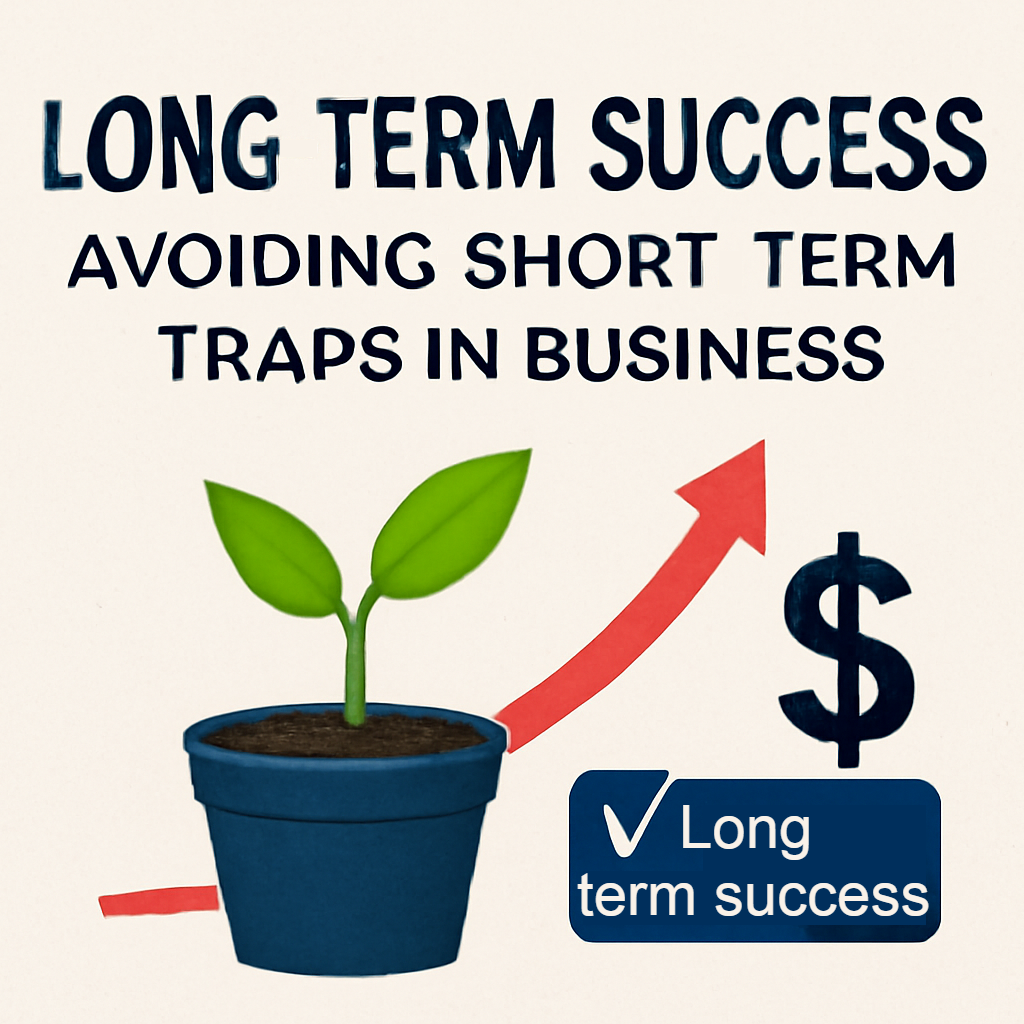This post is also available in:
Bahasa Malaysia
Building for the Future: How Small Businesses Can Ensure Long-Term Sustainability Without Falling Into Short-Term Traps
Running a small business often feels like balancing on a tightrope. On one side, you need to generate enough revenue to keep the lights on today. On the other, you must plan ahead so your business can thrive five, ten, or twenty years from now. The danger for many business owners lies in prioritizing quick wins over building a strong foundation. While short-term gains may provide immediate relief, they can undermine long-term sustainability if pursued in isolation.
Here’s how small businesses can strike the right balance and build for lasting success.

1. Develop a Clear Vision and Stick to It
A long-term vision gives your business direction and purpose. It’s easy to chase after every opportunity that promises quick profits, but without a guiding vision, you risk spreading yourself too thin.
- Action tip: Write down your 5–10 year business goals. Revisit them quarterly to ensure your short-term actions align with your bigger picture.
2. Build Strong Financial Foundations
Cash flow is the lifeblood of small businesses. While discounting heavily or taking on risky credit terms may increase sales quickly, it can strain your cash reserves and weaken stability.
- Action tip: Maintain accurate financial records, prepare cash flow forecasts, and avoid over-leveraging. Consider outsourcing accounting to ensure you always have reliable numbers for decision-making.
3. Invest in Relationships, Not Just Transactions
Quick sales may boost revenue, but lasting customer relationships build repeat business and referrals. The same goes for suppliers and employees. Treating these stakeholders as long-term partners pays dividends over time.
- Action tip: Focus on consistent value delivery, customer service, and fair dealings with suppliers. Retaining one customer is often cheaper than acquiring five new ones.
4. Embrace Innovation Gradually
Chasing every trend or tool can burn resources, but ignoring change can leave you behind. The key is to adopt innovation strategically—choose technology or processes that align with your vision and enhance efficiency.
- Action tip: Test new tools or strategies on a small scale before committing fully. For example, adopting cloud-based accounting and payroll solutions can help you scale sustainably without heavy upfront costs.
5. Prioritize Employee Growth and Wellbeing
Relying solely on short-term contract staff or overworking your core team may reduce costs temporarily, but it risks burnout and turnover. A loyal, skilled team strengthens your long-term capacity to serve customers.
- Action tip: Offer training opportunities, recognize achievements, and create a culture where employees see a future in your business.
6. Balance Risk and Opportunity
Taking risks is part of entrepreneurship, but reckless decision-making can jeopardize sustainability. Evaluating opportunities against long-term goals ensures you don’t chase short-lived wins that destabilize your business.
- Action tip: Before saying “yes” to a new venture, ask: Will this decision help us grow sustainably, or is it just a short-term fix?
7. Keep Compliance and Governance in Check
Some small businesses overlook tax, legal, or regulatory requirements to cut corners. This might save costs in the short term but creates massive risks down the road—penalties, fines, or even forced closure.
- Action tip: Stay updated with local regulations (such as Malaysia’s e-Invoicing requirements), and build compliance into your daily operations.
Final Thoughts
Sustainability doesn’t mean avoiding short-term gains—it means ensuring they serve your long-term goals. A sustainable small business is one that grows steadily, maintains financial health, nurtures strong relationships, and adapts to change with resilience. By keeping your long-term vision at the center of every decision, you’ll avoid the trap of quick wins that don’t last—and instead, build a business that thrives for decades.